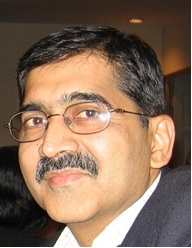By Charu Bahri
Scientists who studied India’s 2015 heatwave that claimed 2,500 lives (over 1,700 in Andhra Pradesh alone) concluded that the region was likely to see intense heatwaves once in every 10 years, instead of once in every 100 years.
The next year turned out to be India’s hottest ever, since record-keeping began in 1901. And earlier in 2017, summer got off to an unprecedented intense start, as heatwaves in late March swept through nine states.
With 13 of India’s 15 hottest years on record occurring since 2002, intense heat appears to be the new normal. US President Donald Trump dismisses global warming as a hoax, a money-making industry, and a concept created by and for the Chinese in order to make US manufacturing non-competitive and has now pulled his country out of the Paris Climate Agreement.
But India simply cannot afford to ignore the new health and livelihood challenges global warming will present to “people who are no strangers to warm weather but who will now face more severe heatwaves intensified by climate change”, as Dileep Mavalankar, 59, director of the Indian Institute of Public Health, India’s first public health university in Gandhinagar, Gujarat, told IndiaSpend in an interview.

If heatwaves are perceived as a disaster-like situation with the potential to kill thousands, heat deaths are preventable.
In 2014, the Ahmedabad Municipal Corporation pioneered South Asia’s first Heat Action Plan, as IndiaSpend reported on May 31, 2017.
“Combining public education, extreme heat warnings and efforts to safeguard the most vulnerable populations is proving to be a good template for other cities and states to follow,” said Mavalankar of the Heat Action Plan that his colleagues and the Natural Resources Defence Council are supporting. Excerpts from the interview:
Q: How reliable are heatstroke mortality figures in the media, and why do these fluctuate so much from year to year?
A: Heatwave fatalities are not at all well documented in India. The fatality numbers that the civil administration releases to the media are well below the actual number of people who succumb to excessive heat. One reason for this is death recording in our country is far from perfect. People who have not been directly exposed to the sun but have been exposed to high ambient temperature can also suffer heatstroke.
In Ahmedabad, where we have studied the number and cause of fatalities in detail, we know that about 100 people die of all causes on any given day in summer. During the heatwave of 2010, the city’s five municipal hospitals attributed 65 fatalities to heatstroke during the week. But we estimated that the heat caused 800 additional deaths in that week.
Q: The initiative of the Ahmedabad Municipal Corporation, which you are supporting and guiding, combines measures to prevent heatstroke and strengthen public-health responses to heatstroke victims. However, of what use is it to tell poor people to take shelter, when they may be living on the road with no resources to protect themselves?
A: We are aware that the urban poor are extremely vulnerable to heatstroke. In Ahmedabad, we proposed that municipal gardens be kept open between 11 am and 5 pm, a time when they usually remain closed to the public, with the idea that homeless people and working class people with jobs in their vicinity would find shade and a place to rest under trees. For the same reason, we requested the administration to keep the city’s 45 night shelters open during the day.
Over 900 water facilities were also created. An initiative driven by the mayor was asking paint companies to donate white paint to coat the roof of poor people’s houses. White-painted roofs reflect more sunlight, which helps keep interiors cool.
The municipality has not accepted some of our suggestions, such as our request to supply extra water during heatwaves. A lot of municipalities across India supply extra water during religious festivals, and we believe it is even more important to supply extra water at a time when people need it to protect their health.
We also proposed that the municipality should not issue major work contracts after April. Also, labour contractors should be asked to employ workers in split shifts, such as from 6 am to 11 am and from 5 pm to 8 pm. We were told this is impractical to implement.
Q: Densely populated areas are said to be generally hotter than rural areas. What temperature difference have you recorded between rural areas and urban areas?
A: In summer, we have found that Ahmedabad records temperatures that are usually 2-3 degrees Centigrade higher, even up to 4 degrees higher than the surrounding areas because of the urban heat island effect, a phenomenon whereby concrete buildings and traffic enclose the heat in a limited space. Rural areas around the city with more vegetation and water bodies see lower temperatures.
However, the majority of residents of urban areas spend less time outdoors and have more resources and utilities (such as water, cooling devices, hospitals) to rely on for their wellbeing. Heat fatalities can happen in both urban and rural areas. Recently, we have also started pilot testing a heat action plan for rural blocks of Rajasthan with the help of Unicef.
(In arrangement with IndiaSpend.org, a data-driven, non-profit, public interest journalism platform)













